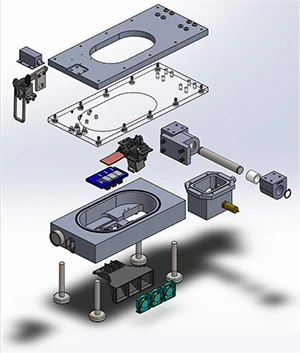Award-Winning Slide Staining

Sometimes trial and error pays off. Ask Team 1427, who took second place in the Raytheon Sensintel Best Overall Design competition at Engineering Design Day 2015.
With off-the-shelf components, Team 1427 developed a more efficient system for microscopic examination of tissue samples. The system allows for testing a sample at three different temperatures.
“The point of thermal control is that instead of running three different tests under three different temperatures, you can run one thermal test across a single microscope,” said team member Chris Sanford.
The project expands on current slide-staining techniques, in which tissue samples are fixed on to a slide using a technique called "heat-fixing." Once that is done, a dye can then be added to stain the sample so that the cells and cell components are easier to view.
Team members, with the help of mentors Chris Donat, Kenyon Kehl and Steven Lei, had several challenges to overcome – like figuring out which materials would make the vest slide base without contaminating the sample.
Marissa Lopez-Pier was in constant contact with sponsor Ventana Medical Systems as the team worked through the different possibilities. "We couldn't use certain metals that would give off contaminants, or material that gives off ions like iron and copper that have an electrical charge," she said.
Project: Super-Stainer Precision Thermal Control
Team 1427 Members:
Marissa Lopez-Pier, biomedical engineering
Amy Vaughn, biomedical engineering
Ziad Alrayes, industrial engineering
Cody Kalmick, mechanical engineering
Koriel Lambson, mechanical engineering
Chris Sanford, electrical engineering
Sponsor: Ventana Medical Systems Inc.
| Enclosure Assembly | |
|

